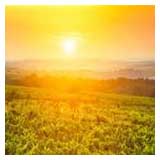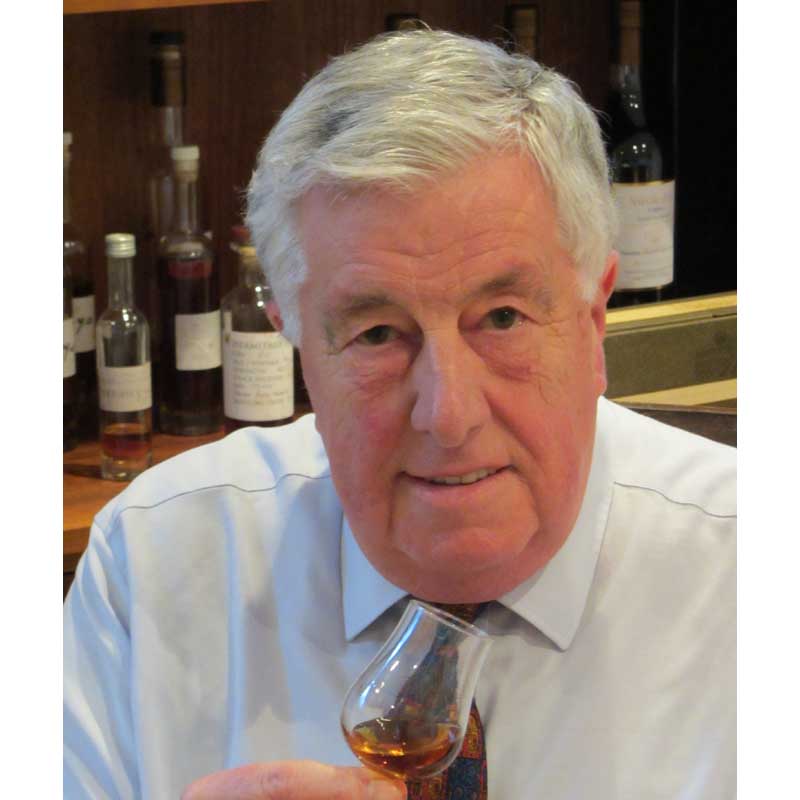Category: How to make Cognac

Cognac Houses Address Climate Change
As temperatures steadily rise across the globe, the knock on effect of climate change on viticulture is being felt by all wine producers. In the Cognac region it has been found that during the last 30 years, a 1°C increase in the maximum daytime temperature during the growing period of the vine has resulted in a 10 day advancement of the harvest. Whilst harvesting early has so far been successful, temperature increases also compromise the acid levels in the grapes (high acidity is essential for cognac production.) Longer term a different solution must be found so some of the big… Read more

David on Technical Topics – The Cognac Wines
For many years, cognac quality has centred mainly on the distillation process and the basic needs of providing a relatively acidic and low alcohol wine. After the Phylloxera, in the late nineteenth century, viticulturists started to recognise the need to control the wine, harvest and production methods to a far higher level. The St Emillion (Ugni Blanc) grape, favoured for its resistance to disease and greater cropping, became the dominant variety and a key part of modern cognac wines. The increasing demand on the industry for more cognac created further demands on the viticulturist to provide greater quantities of clean… Read more

David on Technical Topics – The Vines
The chalky soil of the Charente, particularly in the Champagnes, is not unique since it is also a notable feature of the Champagne growing region (it is the ‘Champenoise’ who stole the name for their famous drink). The chalk provides excellent drainage and can also store substantial quantities of water which the vine roots can easily access. Crucially too, chalky soil, which provides very few nutrients, improves the quality of the grapes. Whilst the ‘terroir’ in the Cognac region can change, the grape varieties used have changed only twice in the last four centuries. In the 17th Century the region… Read more

David on Technical Topics – ‘Terroir’, The Land
The French use the term ‘terroir’ uniquely to describe geological and climatic conditions as a basis for their system of ‘Appellations Cognac Controlee’. This is the geographic, quality control that defines the cognac crus and is vital for the Cognaçaise to differentiate their products. All the brandies entitled to the ‘cognac appellation’ are made from the same grape varieties, harvested in the same way, at the same time of the year, fermented in similar vats, distilled in the same type of still and aged in regulation oak barrels. There are six crus of cognac and in the centre is the… Read more
David on Technical Topics – Cognac Distillation, The Wine Reduction
Cognac Distillation – The Wine Reduction In the 16th and 17th centuries, the brandies produced in the Charente were reduced by distillation as this made them easier to ship abroad. The risk of low alcohol wines going off before they reached their destination was avoided and the intention was to cut them back with water before they were consumed. But the Cognaçaise soon found that keeping the strong wines in barrels changed them for the better and so they started to learn the skills of distillation. The basic concept of distillation is that you boil the wines, collect the vapours… Read more
David on Technical Topics – Cognac Distillation, The Still
The cognac distillation process is the most technical part of making the golden nectar. It is the stage where the wine is reduced to a spirit, which we refer to as ‘eau de vie’. Distillation is carried out twice. The first time it changes the wine to a ‘brouillis’, a cloudy liquid with a strength of around 27 – 30% alcohol, and then it is distilled again. In this article we will consider the distillation equipment required and next month we will explore the process. The complete distillation process is controlled by the Bureau National Interprofessionel du Cognac (BNIC) and… Read more

David on Technical Topics – Adding Water to Cognac
We call it dilution in the industry and nearly every cognac needs to have a level of dilution to optimise its qualities. Some cognacs are superbly smooth and almost too easy to drink whilst others are fiery and aggressive and seem to burn the mouth with every mouthful drunk. Getting the optimum balance between aggressiveness and flavour is a skill that must be acquired in order to maximise the quality of the cognac. Adding water to cognac is certainly not just a case of pouring water from the tap into a barrel of cognac. The water must be pure and… Read more

David on Technical Topics – Is there a need to Blend Cognac?
There are between four and five thousand cognac producers in the Charente and Charente Maritime region of France. Only brandy produced here, under strict regulations, is allowed to be called cognac. The world market for cognac is hundreds of millions of bottles but because cognac can only be made once a year, after the grape harvest, the amount that can be sold is limited to how much can be made. The situation is made yet more difficult as even the very youngest cognac has to be aged for 3 years in oak barrels before it can be sold. The big… Read more

David on Technical Topics – The Colour of Cognac Part 2.
Last month I discussed the effect of the natural ageing process on cognac colour but not all cognacs on the shelf have obtained their colour this way. Some of the big cognac houses try to provide a false maturity to their cognacs by adding a colouring agent. Most common of these colour additives is caramel and even quite small additions can make a relatively large difference since its use is usually in relatively young spirit that has only been aged for perhaps 2-3 years. Previously I discussed how different types, sizes and toasting of oak barrels all make a difference… Read more

David on Technical Topics – The Colour of Cognac Part 1.
There is a long held view amongst cognac drinkers that the darker a cognac appears the longer it has been aged in the barrel and therefore the better and more valuable it is. There is, up to a point, some truth in this view since during the natural ageing process, the tannins in the wood add colour to the barrels’ contents. Cognacs are aged in barrels made from one of two types of French oak, Limousin or Tronçais. The former comes from the Limousin forests north east of Angouleme and is a fairly wide grain oak whilst the latter, which… Read more
